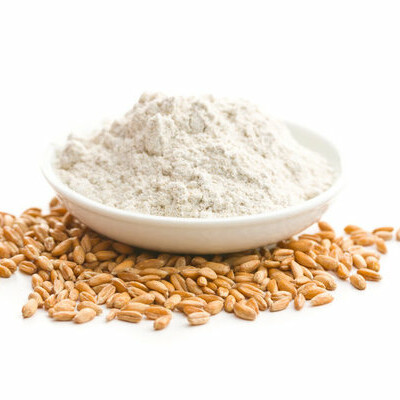Wheat Protein Isolate
What is Wheat Protein Isolate?
Wheat protein isolate, or WPI, refers to the wheat protein that has been separated (physically and/or chemically) from other flour components, such as starch, fat, fiber and simple sugars, found in the wheat kernel.
Commercial powdered wheat protein isolates usually have a minimum protein content of 90% and a moisture content close to 6%.
WPI can be used in the following product categories:
- Keto baking
- Low calorie bakery products
- Baby food
- High fiber multigrain bread
- Corn tortillas
- Egg-reduced sweet goods
- Dry blend protein powders
- Extruded products
Function
Wheat protein isolate is an excellent ingredient in low-carbohydrate or keto baking. Especially for non-wheat flours, like almond and coconut flour, which lack gluten-forming proteins. Here, WPI is essential for good superior gas retention and for proper product volume and aerated crumb texture.
Wheat protein isolates differ markedly from other gluten-based products, such as vital wheat gluten. The main difference between these two products lies in their protein content. Isolates have a minimum protein content of 90%, while vital wheat gluten usually has a protein content of about 60 to 75%, depending on the grade or product specifications.
Nutrition and health
Wheat protein isolates are not an option for people suffering from celiac disease or any other gluten intolerance or gluten allergy.
Commercial production
Wheat protein isolate is commercially produced through wet-processing or wet-milling of wheat. The isolate is prepared by removing starch from wheat flour and carefully drying the remaining high protein fraction to avoid protein denaturation so as to retain the viscoelastic properties of glutenins and gliadins.
In the wet-milling process, the protein components, i.e .the water-insoluble proteins exist as a doughy, viscoelastic mass and the starch exists as an aqueous dispersion. Passing the liquid suspension through suitable screens or by using centrifugation can successfully separate the protein from starch.
Purification of the protein stream from remaining non-protein components yields a product that can be dried using a flash drier or a spray drier after appropriate dispersion of the protein. The resulting dried powder with around 90% protein (N x 5.7, dry basis) is classified as wheat protein isolate.
Application
WPI in bakery products lacking wheat flour
Wheat protein isolate is highly effective in applications where dough strength, dough elasticity, exceptional functionality in terms of gas retention and high protein content are all required. This might be the case of high-speed keto baking. In such applications, wheat protein isolate is added to bread dough formulations to obtain a superior oven spring and better crumb chewiness.
Regulation
Similar to other food-based ingredients, such as soy or pea protein isolates, wheat protein isolates may be granted a GRAS status by the U.S. FDA upon request, provided that the Agency receives and verifies production process, food safety standards of production facility, and related documentation.1
In the EU, there’s no specific legislation regarding the composition of wheat protein isolate or its applications except when used in baby foods.
References
- U.S. Food and Drug Administration, The inventory of GRAS notices, https://www.cfsanappsexternal.fda.gov/scripts/fdcc/?set=GRASNotices&sort=GRN_No&order=DESC&startrow=1&type=basic&search=isolate, Accessed 1 November 2021.


